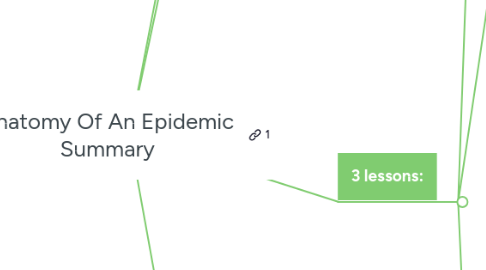
1. 1-Sentence-Summary:
1.1. Anatomy Of An Epidemic teaches you how to make better decisions about your mental health as it uncovers the questionable origin of medication and reveals the interesting connection between psychiatry and pharmaceutical companies.
2. Favorite quote from the author:
2.1. "Rather than fix chemical imbalances in the brain, the drugs create them." - Robert Whitaker
3. 3 lessons:
3.1. The development of the first drugs for treating mental illness is questionable and they didn’t have adequate testing before their use.
3.1.1. Psychiatric medications surprisingly have not been thoroughly tested
3.1.2. The drugs, said to treat things from mania to depression, weren’t intended for mental illness at all when they were created.
3.1.2.1. They were created by doctors in the 1950s who were in search of a “magic bullet” to cure infectious diseases.
3.1.2.2. It wasn’t until they were testing these new compounds that they found some had an effect on neurological and emotional responses.
3.1.2.3. This is an unusual way to find a drug.
3.1.2.3.1. Usually, scientists search for a cure for a specific disease and do research from what they know about the disease, such as the discovery of insulin for diabetes.
3.1.2.4. Because they were created without a specific disease in mind, they came on the market with minimal testing.
3.1.2.4.1. The first psychoactive drug on the market, Thorazine, was tested on less than 150 psychiatric patients beforehand.
3.2. Medication might seem like it helps but it can leave you worse off in the long-run.
3.2.1. One big problem that happens with limited drug testing is that there needs to be enough time for side effects to emerge.
3.2.2. And when it comes to side effects, these drugs have many
3.2.2.1. Science has shown that long-term use of psychiatric medications can cause significant lasting changes to the brain.
3.2.2.2. The most common drugs prescribed for depression are SSRIs, or serotonin reuptake inhibitors.
3.2.2.2.1. These cause an increase of serotonin which helps with mood, but in excess, this can cause manic episodes.
3.2.2.3. Antipsychotic drugs for things like schizophrenia can cause tremors and impaired motor function.
3.2.2.4. Other side effects of psychiatric drugs are memory loss, suicidal thoughts, apathy, and weight gain.
3.2.3. Often, doctors treat these symptoms with more drugs, and these tend to snowball.
3.2.3.1. There is a connection between antipsychotic drugs and a reduction of brain size.
3.2.4. Yet another problem is the dependency they can create.
3.2.4.1. Withdrawal can make the brain’s chemical balances go into shock.
3.2.4.2. And while they give short-term relief of symptoms, the long-term changes can stay long after when the symptoms would have faded naturally.
3.2.5. Before taking the antipsychotics, patients with schizophrenia might experience episodes for a maximum of six months, followed by normal periods.
3.2.5.1. But after treatment has begun with drugs, these episodes can become chronic or even lifelong.
3.2.6. While these drugs improve the lives of some, many patients put on long-term drug therapy now find themselves chronically ill.
3.2.7. We need to consider the repercussions of the drugs we prescribe so freely.
3.2.7.1. Studies have shown that half of the schizophrenic patients could live productive lives without antipsychotics.
3.2.7.2. In addition, studies have linked the long-term use of antidepressants with increased risk of long-term depression.
3.3. The fall and rise of psychiatry might make you wonder at the legitimacy of this practice.
3.3.1. Before the drugs, psychiatrists actually were focused solely on Freudian analysis rather than brain chemistry.
3.3.2. But this changed with the introduction of psychoactive drugs.
3.3.2.1. They started paying attention to the brain and how they could use brain-altering drugs to eliminate and reduce symptoms.
3.3.2.2. But when severe side effects became apparent, and the anti-psychiatry movement began.
3.3.2.3. Divisions and competition from other professions such as psychologists and social workers made the profession even more weak.
3.3.3. Eventually, they rebranded themselves by launching a campaign to assert their scientific legitimacy and boost their status.
3.3.4. Part of this was releasing the DSM-III, which classified every recognized mental disorder.
3.3.4.1. In this third edition, there were 265 definitions for any profession to use for classification.
3.3.4.2. The DSM-III became widely used, but the real goal was to justify the use of psychiatric medications.
3.3.4.3. They made an effort to push the myth that drugs could fix any “chemical imbalance” within the brain, therefore curing mental illness.
3.3.5. With this new rebranding, they were able to make a lot more money.
3.3.5.1. Pharmaceutical companies enable doctors to have a large salary.
3.3.5.2. Drug companies would provide fancy dinners and pay large sums for psychiatric experts to give testimonials about their drugs, claiming them to be educational, while purposely leaving out discussion of side effects.
